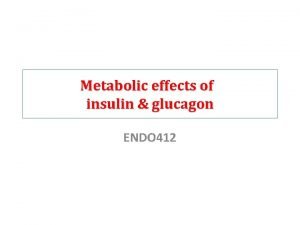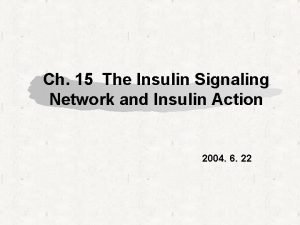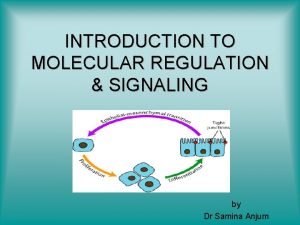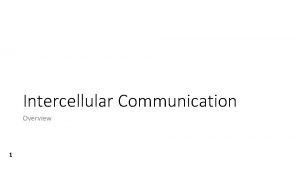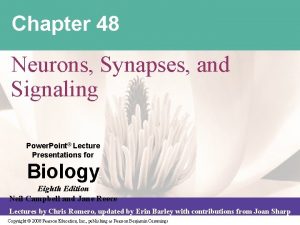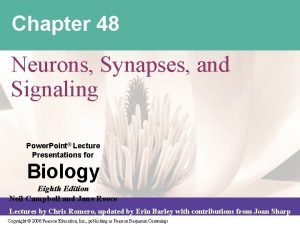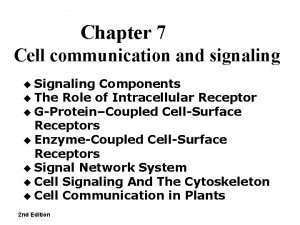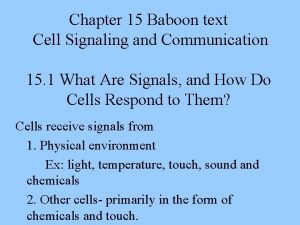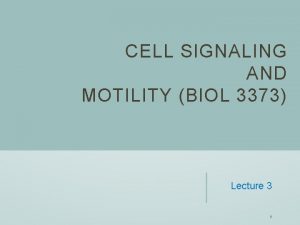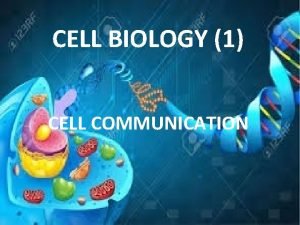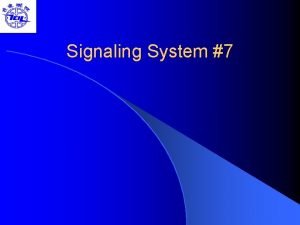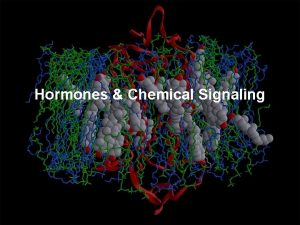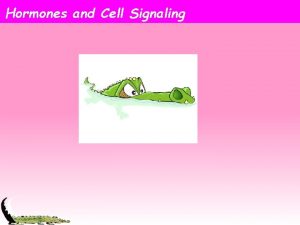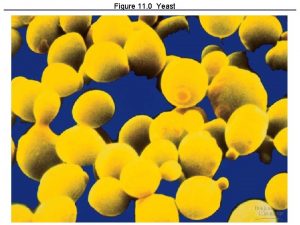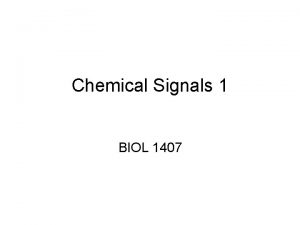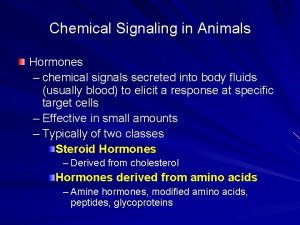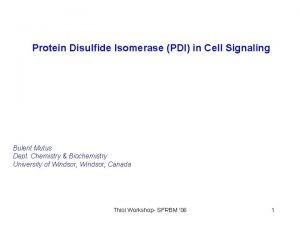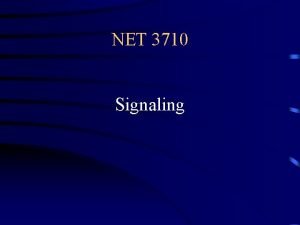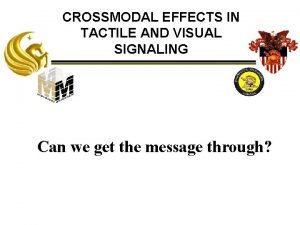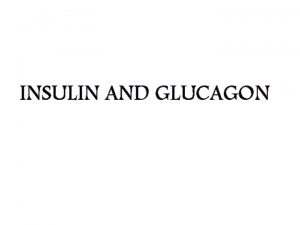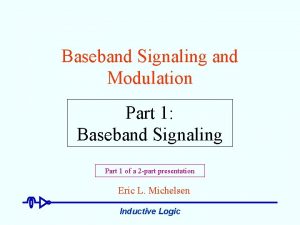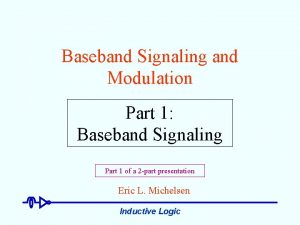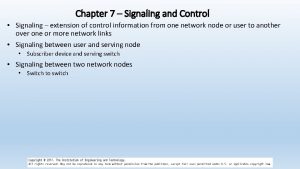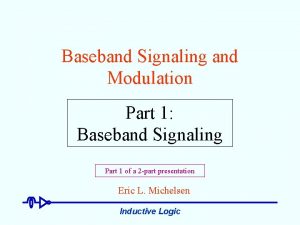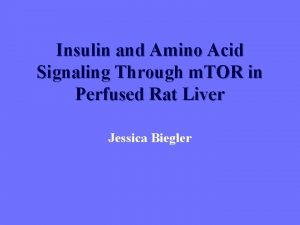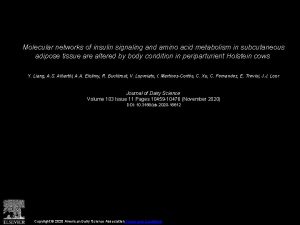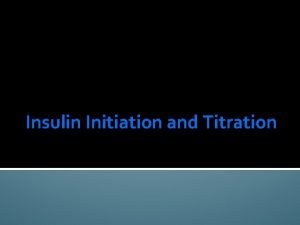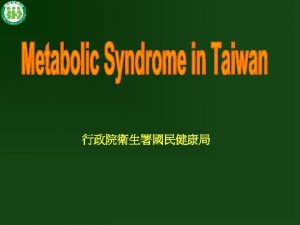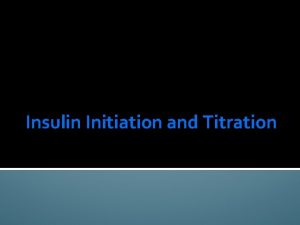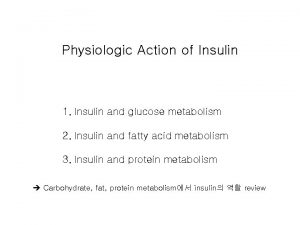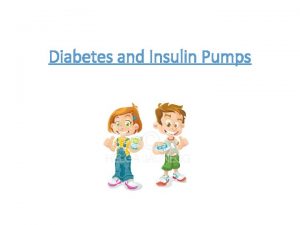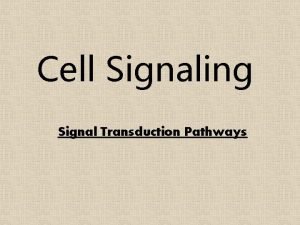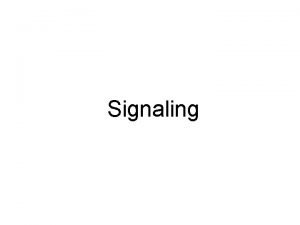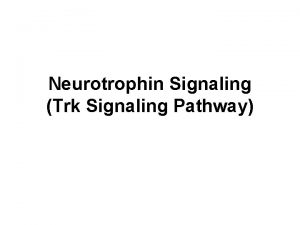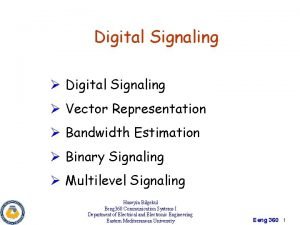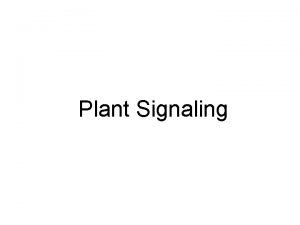Ch 15 The Insulin Signaling Network and Insulin






















































- Slides: 54

Ch. 15 The Insulin Signaling Network and Insulin Action 2004. 6. 22

Insulin signaling at target tissue Normal growth and development Normal homeostasis of glucose, fat, and protein metabolism Improved understanding of signaling pathways involving insulin action Better understanding of pathophysiology of insulin resistance asscociated with obesity and type 2 diabetes Newer and more effective therapeutic agents This chapter Current understanding of insuin action Strucutre of IR, elements that constitute insuling signaling pathways Impairments in signaling pathways and new paradigms regarding the molecular basis of insulin resistance

Insulin receptor and its substrates

STRUCTURE OF INSULIN RECEPTOR Family of homologous receptor tyrosine kinases (RTKs) - IR / IGF-1 R(insulin-like growth factor-1) - IRR (insulin receptor related receptor) : orphan receptor Proteolytic cleavage of a single polypeptide chain precursor → α & β chains linked by disulfide bonds → biologically active α 2β 2 receptor heterotetramer Product of a single gene containing 22 exons - 1, 355 amino acids, M. Wt of 153, 917 - Exon 1 – 11 : α subunit / Exon 12 -22 : β subunit - Alternative splicing of exon 11 in hematopoietic tissues - Longer transcript predominates in liver, muscle, and adipose tissues

Two IR isoforms IR type A (IR-A or Ex 11 -) (-) Sequence coding for 12 a. a. in C-terminus of α chain of Rc. Preferentiallly activates type Ia of PI 3 -kinase and p 70 S 6 K Promotes insulin gene transcription in pancreatic β cells IR type B (IR-B or Ex 11+) (+) Sequence coding for 12 a. a. in C-terminus of α chain of Rc. Stimulates class II of PI 3 -kinase and PKB (Akt) Promotes glucose/insulin stimulated β-glucokinase transcription Different localization of two IR isoforms in plasma memb. of β cells and different sensitivity for insulin

The Extracellular Domain Entire α-subunit and about one third of β-subunit Ligand-binding domains, with α-subunit being the primary lignand-binding site Analogous region of IR (residues 1 -468) Cannot bind ligand on its own, high-affinity insulin binding Restored by addition of residues 704 to 719 of IR ⇒ carboxyl-terminal region of α-subunit : part of ligand- binding site

Three repeats of fibronectin type III domain (Fn. III) Deletion of residues 450 to 601 : blunted Tyr autophosphorylation response ⇒ involved in transmission of insulin-binding signal to tyrosine kinase N-linked and O-linked sugar moieties Mutations of a. a. of potential sugar binding sites : alter IR kinase acitivity Improper glycosylation : accelerates IR degradation ⇒ required to preserve proper structure and function of IR

The Transmembrane Domain Part of β-subunits α-helix structure with seven turns Function primarily as passive lipid anchor 23 hydrophobic a. a. , flanked at C-terminal end by a short sequence of basic residues (Arg-Lys-Arg) Potential interactions with head group of negatively charged phospholipids May represent a stop-transfer signal, anchoring IR in membrane during biosynthesis

The Intracellular Region C-termianal 403 a. a. of β-subunits, 3 subdomains 1. Juxtamembrane (JM) domain At least one autophosphorylation site (Tyr 972) in NPXY motif - Binding site for IR substrates such as Shc and IRS proteins Regulation of IR internalization (NPXY, GPLY, di-Leu motifs) Replacement of Tyr 972 with Phe or Ala - Inability of mutant Rc to interact with substrate proteins (IRS-I & Crk-II) → Impairs receptor signal transmission and both metabolic and growthpromoting effects of insulin - Rescued by overexpression of IRS-1 ⇒ Involved in interactions of Rc with substrate proteins

2. Tyrosine kinase domain of IR : hallmark of RTK family 84% homology with IGF-1 R Two lobes with a single connection N-terminal lobe : ATP-binding site C-terminal lobe : active site (catalytic loop), three autophosphorylation sites (activation loop), and kinase-insert region 3. C-terminus domain of IR Two autophosphorylation sites, still unresolved role Mutations of these Tyr residues Augments insulin-dependent activation of MAPK and PI 3 -K Impaired metabolic effects and impaired induction of c-fos but augmented mitogenic signaling Negatively regulate growth-promoting effects of insulin

INSULIN ACTION AT THE CELLULAR LEVEL Diverse biologic responses by binding of insulin to IR Glucose transport Glycogen and protien synthesis Mitogenensis Cell survival

Ligand Binding and Receptor Autophosphorylation Binding of insulin to specific regions of α-subunit → rapid conformational change in Rc → activation of tyrosine kinase domain (transautophosphorylation) : kinase domain in one half of the receptor-dimer phosphorylates cytoplasmic tyrosine residues in activation loop of the other half of the receptor-dimer → activation loop swings out of the catalytic site to give unrestricted access to ATP and substrates

Insulin Receptor Substrates Insulin receptor substrates Three isoforms of Shc, IRS proteins (IRS-1 to -4), p 60 dok, Cbl, APS, and Gab-1 Tyr-phosphorylated IR substrates by activated IRK : Function as signaling scaffolds, providing a docking interface for proteins having SH 2 domains SH 2 proteins P-Tyr phosphatase SHP 2 (SH-PTP 2) and cytoplasmic Tyr kinase Fyn : Enzymes p 85 regulatory subunit of PI 3 -kinase, Grb 2, or APS Function as adaptor proteins for downstream effectors that further propagate the metabolic and growth promoting effects of insulin

IRS proteins Conserved pleckstrin homology (PH) domain 1) Membrane - lipid interactions Anchor IRS proteins to membrane phosphoinositides Helps to localize IRS proteins in close proximity to Rc - deletion of PH domain : ↓ tyrosine phosphorylation of IRS-1 2) Protein – protein interactions PH domain – interacting protien (PHIP) selectively binds Overexpression of PHIP : ↑ insulin-induced transcriptional responses Dominant-negative mutant of PHIP (DN-PHIP) : specifically blocks transcriptional & mitogenic signals by insulin : inhibits actin cytoskeletal reorganization and translocation to membrane of GLUT-4 ⇒ PHIP : physiologic binding protein of IRS-1 PH domain, which plays a role in insulin signaling

P-Tyr binding (PTB) domain of IRS proteins 75% sequence identitiy between IRS-1 and IRS-2 Function as a binding site to NPXY motif of JM region of IR C-terminal region of IRS proteins Contains multiple Tyr-phosphorylation motifs that serve as docking sites for SH 2 domain-containing proteins (p 85α regulatory subunit of PI 3 -kinase, Grb 2, Nck, Crk, Fyn, SHP-2…)

> 70 potential Ser/Thr phosphorylation sites Several kinases that can phosphorylate IRS-1 : casein kinase II, glycogen synthase kinase 3, MAPK, PI 3 -kinase IRS-1 Insulin (-) : Ser (strong) and Tyr (weak) phosphorylation Insulin (+) : ↑ Tyr and Ser phosphorylation Phosphorylation of IRS-1 on Ser/Thr residues reduces its ability to undergo Tyr phosphorylation by IRK serves to shut off insulin signaling

Relative role of IRS proteins in mediating insulin action 1) IRS-1 and IRS-2 IRS-1 knockout mice : generalized growth retardation, as well as insulin resistance and IGT, compensation of IRS-2 (PI 3 -K) IRS-2 null mice : insulin resistance but growth defects limited only to pancreatic β-cells → type 2 diabetes Complementary rather than redundant role in insulin signaling Attributed to selected structural differences, in addition to differences in their tissue distribution & subcellular localization 2) IRS-3 and IRS-4 Act as negative regulators of IRS-1 and IRS-2 in cultured cells IRS-3 and IRS-4 knoukout mice : mild defects in growth and metabolism

Shc family Adapter proteins that serve as major substrates of IRK Three isoforms of 46, 52, and 66 kd Insulin-stimulated Tyr-phosphorylated Shc + SH 2 domain of Grb 2 → activation of m. SOS/Ras/MAPK signaling pathway PTB & SH 2 domain : Interaction with JM or C-terminal of IR PI 3 -kinase as a necessary intermediary step facilitating insulinstimulated Tyr-phosphorylation of Shc through PTB domain PP 2 A (Ser/Thr phosphatase) : inhibit Tyr-phosphorylation of Shc independent of P-Tyr binding

Gab-1 (Grb 2 -associated binder-1) Insulin receptor substrate Tyr-phosphorylated Gab-1 recruits downstream signaling elements possessing SH 2 domain (p 85 PI 3 -kinase, phospholipase C-γ, SHP-2 (protein tyrosine phosphatase), and Crk) Substrate for other RTKs (EGF, FGF, HGF, NGF Rcs) Physiologic roles of Gab-1 : little known May be part of signaling pathways leading to cell growth, transformation, and apoptosis Mediator of osmotic shock signal transduction pathway that induces glucose transport in adipocytes through Gab-1 -associated PI 3 -kinase acitivity

The Insulin Signaling Network Three major pathways : PI 3 -kinase, MAPK, and Cbl/CAP pathways MAPK pathway : general signaling pathway leading to enhanced cell growth PI 3 -kinase and Cbl/CAP pathways : biologic responses that are more unique to insulin action

Insulin signaling network • Activated IRK • Substrates • 3 signaling pathways DNA / RNA / Protein Synthesis Gluconeogenic Gene Transcription Glycogen Synthesis Glucose Transport • Function

The PI 3 -kinase pathway Central role of metabolic & growth-promoting actions of insulin p 110 catalytic subunit and p 85 regulatory subunit Direct interactions of regulatory subunit with Tyr-phosphorylated YMXM and YXXM motifs of activated growth factor receptors, or with adapter proteins such as IRS proteins → activation of PI 3 K p 110 catalytic subunit in close proximity to its lipid substrates in cell membrane May relieve an inhibitory effect of p 85 on p 110 kinase activity p 85α : predominant subunit that mediates most biologic responses to insulin (at least eight isoforms of regulatory subunits) Inhibitors of class Ia PI 3 -kinase, or transfections with dominant negative constructs of enzyme block most metabolic actions of insulin including stimulation of glucose transport, glycogen, and lipid synthesis.

Monomeric p 85 inhibits IRS protein-mediated signal by competing with p 85 -p 110 dimer. Partial depletion of p 85 improves insulin signaling Complete depletion of p 85 results in a significant decrease in PI 3 kinase mediated biologic responses ⇒ optimal signaling depends on a critical molecular balance between regulatory and catalytic subunits Association of p 85 -p 110 complex with IRS molecules → production of PIP 3 → interaction with PH domain of PDK 1, PKB, and other signaling molecules → their recruitment to plasma membrane → changes in their structure, function, and their substrate availability Ser kinase activity independent of generation of PIP 3

Atypical Protein Kinase C Isoforms : PKCζ and PKCλ Activated by PI 3 -kinase and PDK 1 Increase basal and insulin-stimulated translocation to the membrane of GLUT-4 in adipocytes and muscle cells Play a critical role in physiologic negative feedback control mechanism, induced by insulin, that serves to terminate insulin action : PKCζ-mediated phosphorylation of IRS proteins leads their dissociation from IR, thereby terminating insulin signaling

Protein Kinase B (Akt) Major substrates of PDK 1 Mediating regulation of glucose transport, glycogen synthesis, protein synthesis, antilipolytic effects of insulin, as well as cell growth and cell survival induced by insulin Phosphorylation at Thr 308 by PDK 1 & at Ser 473 by PDK 2 → maximal activation of PKB Three PKB isoforms PKB 1/PKBα : required for normal growth Deletion of Aktβ(PKB 2) : hepatic insulin resistance Defect in a ability of insulin to activate PKB 2 and -3 but not PKB 1 : impaired insulin-stimulated glucose transport

Protein kinase B, Glucose Transport, and Glycogen Metabolism PI 3 K Regulates translocation of GLUT-4 : obscure mechanism PDK 1 Important role in insulin-induced glycogen synthesis : phosphorylation and inactivation by PKB of GSK 3β PKB (phosphorylates and inactivates glycogen synthase (GS)) GSK 3β → promotes GS activity and glycogen synthesis in response to insulin GSK 3β Inactivates by phosphorylation protein e. IF-2 B GS synthesis eukaryotic initiation factor (e. IF)-2 B → Insulin-mediated activation of PKB reverses, thereby enhancing protein synthesis DNA / RNA / Protein Synthesis Glycogen Synthesis

Protein kinase B and Protein Synthesis Mammalian target of rapamycin (m. TOR) - Ser/Thr kinase that serves as a molecular sensor that regulates protein synthesis on the basis of nutrients availability Mechanisms of activation of insulin-induced protein synthesis PI 3 K at translational level PDK 1 P 70 S 6 K PKB m. TOR ribosomal protein S 6 4 E-BP 1 e. IF-4 E DNA/RNA/Protein Syntheis : translation repressor

Protein kinase B, Gene Expression, and Cell survival Insulin inhibits nuclear translocations of transcription factors by phosphorylation these factors by PKB in an insulin-dependent manner Forkhead family (FH) FKHR (Foxo-1, forkhead box transcription factor O 1), FKHRL 1, AFX Insulin-mediated phosphorylation of Foxo-1 by PKB → interaction of Foxo-1 with 14 -3 -3 family of proteins → retention of Foxo-1 in cytoplasm and prevents Foxo-1 from translocating to the nucleus → Inhibition of expresssion of a number of Foxo-1 -regulated genes : gain of function Foxo-1 mutation targeted to liver & pancreatic β-cells → increased hepatic glucose production and impaired β-cell compensation due to decreased Pdx 1 expression → type 2 diabetes Foxo-1 functions in adipose cells to couple insulin signaling to adipogenesis : switching preadipocytes from proliferation to terminal differntiation

Antiapoptotic functions of insulin and IGF-1 by PKB phosphorylation of apoptosis-inducing protein Bad → creates binding sites for 14 -3 -3 proteins and prevents Bad from binding to Bcl-2 family members, Bcl-2, Bcl-XL, thus releasing them for a cell survival response PRAS 40 : novel substrate of PKB : phosphoylation of PKB → binding of PRAS 40 to 14 -3 -3

The Mitogen-Activated Protein Kinase Pathway MAPK kinase (MKKKs) → MAPK kinase (MKK)↑ → MAPK↑ Three well-characterized subfamilies of MAPKs Extracellular signal-regulated kinases ERK 1 and ERK 2 c-Jun NH 2 -terminal kinases JNK 1, JNK 2, and JNK 3 four p 38 enzymes p 38α, β, γ, δ

ERK 1 and ERK 2

Activated ERKs mediate growth-promoting effects of insulin by phosphorylating transcription factors such as Elk-1, leading to induction of gene expression Magnitude and duration of ERK activation Critical determinants of final cell type-specific physiologic outcome Regulated by balance of both activating kinases and inactivating phosphatases Insulin-induced adipocyte differentiation by ERK Activation of MEK/ERK pathway at late stages of adipogenesis : likely to block adipogenic gene expression due to MAPKdependent phosphorylation of PPAR-γ Activation of pathway early during adipogenesis before PPAR expression might promote differentiation by activating transcription factors operating to initiate PPAR and C/EBP expression - Insulin : principal regulator of MAPK pathway in preadipocytes and promotes their differentiation by enhancing expression of C/EBPα and PPAR-γ

C-Jun N-terminal Kinase Stress-activated protein kinases on the basis of their activation in response to inhibition of protein synthesis Bind and phosphorylate c-Jun (component of AP-1, important regulator of gene expression) and increase its transcriptional activity Insulin stimulation → binding of JNK to IRS-1 and phosphorylation on Ser 307 → inhibition of insulin signaling Dual function as a heterologous inhibitor of insulin action during acute and chronic inflammation and as a negative feedback regulator of insulin action by phosphorylating Ser 307 in IRS-1

p 38 Kinases Activated by inflammatory cytokines, hormones, ligands for GPCRs, and stresses such as osmotic or heat shock Undergoes insulin- and IGF-1 -dependent activation PI 3 -kinase-mediated activation of PKB and m. TOR PI 3 -kinase-mediated activation of Rac and p 21 -activated kinase (PAK) Insulin-stimulated activation of MKK 3/6 Role of p 38 Promoting differentiation of cultured muscle cell lines through phosphorylation of MAPK AP-2, degradation of IκBα, and induciton of NFκB Mediates insulin-induced GLUT-4 transport activity, rather than GLUT-4 translocation

The CAP/TC 10 pathway and Glucose Transporter 4 Translocation • Adapter protein. Protein(CAP)/TC 10 pathway Cbl/Cbl-Associated P-Tyr IR • Expressed in insulin-sensitive tissue • Markedly induced during adipocyte diff. → APS • Increased expression by PPARγ agonists → P-Tyr Cbl → Cbl-CAP complex (3 SH 3 domain) → lipid raft, flotillin (So. Ho domain) → P-Tyr Cbl-Crk. II → Crk. II-C 3 G complex → activation of TC 10 Constitutive activation of TC 10 by overexpression of C 3 G : not mimic insulin action but potentiate action of insulin Active mutant of PI 3 -kinase : fully insulin action Two pathways : synergistic signals in regulation of glucose transport

TC 10 Activation of TC 10 : specific for insulin Disruption of its activation : blocks insulin-stimulated glucose transport and GLUT-4 translocation Posttranslational modification (farnesylation and palmitoylation) of TC 10 → secretory pathway → targeting to lipid raft domain Downstream effectors that couple TC 10 to GLUT-4 translocation Exo 70 (a component of exocyst complex) Targeting of GLUT-4 vesicle to plasma membrane, site of fusion Proximity with N-ethylmaleimide sensitive factor (NSF) attachment protein (SNAP) receptor complex involved in docking and fusion Rab protein (Rab 4) : might mediate this tethering step Cdc 42 -interacting protein 4/2 (CIP 4/2) : intracellular compartment → plasma membrane upon insulin stimulation TC 10 seems to stimulate GLUT-4 translocation in a PI 3 -kinaseindependent manner

Cdc 42 GTPase, 69% homology and 86% similarity to TC 10 Downstream effector of Gαq/11 and upstream regulator of PI 3 -kinase and PKCλ in insulin-stimulated pathway leading to GLUT-4 translocation promote glucose transport by activating PI 3 -kinase pathway Regulation of GLUT-4 translocation by TC 10 & Cdc 42 Reorganization of cytoskeleton cortical actin Engagement of molecular motors, Myo 1 c Rho family GTPases : control formation of actin stress fibers lamellipodia and filopodia Controls movement of intracellular GLUT-4 -containing vesicles to plasma membrane Proper structural organization of plasma membrane caveolin and functional clathrin : regulate the rate of endocytosis of GLUT-4, thus affecting the overall rate of GLUT-4 recycling - IRK directly catalyzes tyrosine phosphorylation of caveolin

INHIBITION OF INSULIN RECEPTOR SIGNALING Terminate insulin’s effect immediately following insulin stimulation Through action of lipid and protein phosphatases Through activation of Ser/Thr kinases that phosphorylate and uncouple various elements in insulin signaling pathways Longer time scale Reduction in cellular component of IR, its substrates, and other signaling elements

Insulin Receptor Internalization and Degradation Rapid internalization of IR following insulin binding → either to their degradation or recycling to cell surface Surface redistribution → progressive concentration of receptor-insulin complex in clathrin-coated pits (internalization gates) Stimulation of intrinsic Tyr kinase activity of IR following insulin binding is a prerequisite for surface redistribution IR internalization independent of its ability to phosphorylate IRS proteins but impaired internalization of IR associated with impaired phosphorylation of Shc

Effect of ECM proteins on receptor internalization Interactions of different ECM proteins with cell surface integrins : affect the rate of IR endocytosis Specific polymerized actin structures in the form of filamentous actin tracks : required for maintain proper IR internalization Independent of effects of ECM proteins on IRK activity and its ability to phosphorylate downstream effectors (IRS proteins) Insulin signaling and insulin responsiveness are dually regulated by the adhesive properties of the cells - Ligation of ECM proteins by cell surface receptors (integrins) Generates signaling cascades that modulate the activity of IRK Dictate the rate and extent of IR internalization & degradation

Role of Protein & Lipid Phosphatases Phosphatidyinositol-3 -phosphatases Phosphatase and tensin homologue (PTEN) SH 2 domain-containing inositol 5 -phosphatase SHIP 2 Overexpression of PTEN or SHIP 2 → decreased levels of PIP 3 → might terminate signal transduction or change the nature of phosphoinositides, altering binding specificity

Protein Tyr Phosphatases (PTPs) Prominent role in negative regulation of IR signaling - Dephosphorylate the IR and its substrates and thus serve to terminate IR signaling Transmembrane receptor-like PTPs LAR and PTPα LAR : dephosphorylating adapter proteins such as IRS-2 PTPα : not alter phosphorylation status of IR, IRS-1, or Shc Endoplasmic reticulum-associated PTP 1 B and its close homologue TCPTP Function as direct IR phosphatases, May act in concert PTP 1 B in complex with IRβ subunit activation loop, encompassing p. Tyr residues at 1162 and 1163 Insulin stimulates Tyr phosphorylation & inactivation of PTP 1 B may act as a point of counterregulation of insulin action by catecholamines (↑c. AMP & activation of PKA & PTP 1 B)

Ser Phosphorylation as a Regulatory Means to Terminate Insulin Signaling Control mechanisms Homologous desensitization (Autoregulation) - Downstream enzyme inhibit upstream elements Heterologous desensitization - Signals from apparently unregulated receptor pathways can inhibit the signal

Ser/Thr Phosphorylation of the Insulin Receptor IR Basal state : both P-Ser and P-Thr but no P-Tyr residues Insulin (+) : abrupt increase in P-Tyr content of Rc → slower increase in its P-Ser and P-Thr content IRs with P-Ser residues in basal state : Tyr autophosphorylation more slowly, or even not at all Ser/Thr phosphorylation : act as a physiologic feedback control mechanism to inhibit insulin-stimulated Tyr phosphorylation of Rc Phosphorylation of Ser 955/956, Ser 1293/1294, Thr 1336 Stimulated by insulin, but not major regulatoy sites Ser/Thr kinases : largely unknown, phosphorylation of IR on Ser 1078 without affecting its Tyr kinase activity

Phosphorylation of the Insulin Receptor Induced by Protein Kinases A and C Treatment of cells with inducers of PKA Ser/Thr phosphorylation of IR Impairs the ability of IR to function as a Tyr kinase Contribute to catecholamine-mediated insulin resistance Several PKC isoforms Mediate Ser/Thr phosphorylation of IR in intact cells Inhibit receptor autophosphorylation Not inhibit the receptor tyrosine kinase Further classification for physiologic role of a direct phosphorylation of IR by PKC

Ser/Thr Phosphorylation of the Insulin Receptor and Insulin Resistance Insulin resistance associated with Type 2 diabetes, obesity, hypertension, chronic infection, and C-V dis. Potential mechanism for induction of insulin resistance : Excessive Ser phosphorylation of IR Polycystic ovary syndrome (PCOS) Decrease in IR autophosphorylation Significant increase in Ser phosphorylation of Rc β subunits and decreased insulin-induced Tyr phosphorylation of IR (50%) Increased Ser phosphorylation of IR decreases its Tyr kinase activity One mechanism for defect in insulin action in PCOS and other forms of insulin resistance

Ser/Thr Phosphorylation of Insulin Receptor Substrates Proteins Key negative feedback control mechanism uncouples IRS proteins from their upstream and downsteam effectors terminates signal transduction in response to insulin TNF-α, free fatty acids and cellular stress → Activation of Ser/Thr kinases → Ser/Thr phosphorylation of IRS protein → Inhibition of insulin signaling and induction of insulin resistance

Insulin-Stimulated Ser/Thr Phosphoryation of Insulin Receptor Substrate Proteins : Dual PKCζ PKB : Protects IRS proteins from rapid action of PTPs enables IRS proteins to maintain Tyr-phosphorylated acitive conformation

Mechanisms of inhibition of insulin-stimulated Tyr phosphorylation of IRS proteins by Ser/Thr phosphorylation of IRS proteins (a) Releases IRS proteins from intracellular insoluble multiprotein complexes including cytoskeletal elements (b) Dissociation of IRS proteins from JM domain of IR (c) Inhibits the ability of downstream effectors such as PI 3 K to dock and bind to specific Tyr residues at Cterminal tail of IRS proteins (d) Turns IRS proteins into inhibitors of IRK (e) Induces degradation of IRS proteins

Downstream effectors of PI 3 -kinase as negative regulator of IRS protein function m. TOR : ↑ phosphorylation of Ser residue at C-terminus of IRS → inhibits insulin-stimulated Tyr phosphorylation of IRS-1 and its ability to bind PI 3 -kinase PKCζ : phosphorylation of IRS proteins → dissociates IR-IRS complexes and inhibits the ability of IRS proteins to undergo insulin-stimulated Tyr phosphorylation : function as an insulin-stimulated IRS kinase IKKβ : Ser/Thr kinase (degradation of IκB → activation of NFκB) Serves as substrate for PKCζ and activated by PKCζ Insulin-stimulated IRS kinase - ↓ insulin-stimulated Ser phosphorylation of IRS-1 by salicylates - IKKβ stimulated by stress inducers : phosphorylation of IRS-1 on Ser 307: adjacent to PTB domain, disruption of interaction of between JM domain of IR and PTB domain of IRS-1 JNK : Direct interaction with IRS-1 and phosphorylation of IRS-1 at Ser 307 in an insulin-dependent manner (similar to IKKβ)

Ser/Thr Phosphoryation of Insulin Receptor Substrate Proteins and Insulin Resisitance Inducers of insulin resistance (phorbol esters, FFA, TNF-α) : ↑ Ser/Thr phosphoryation and ↓insulin-stimulated Tyr phosphorylation of IRS Protein (pathologic condition) TNF-α : activation of PKCζ & its downstream target IKKβ Induction of sphingomyelinase and production of ceramide → stimulation of PKCζ activity Induction of complex formation btw PKCζ, p 62, and RIP proteins → link PKCζ to TNF-α signaling (adaptors of TNF-α Rc) IKKβ : IRS kinase Stimulated by FFAs, proinflammatory cytokines, and other inducers of insulin resistance Activation or overexpression of IKKβ : attenuates insulin signaling Inhibition of IKKβ by high doses of salicylates : ↑glucose metabolism

Mechanism of activation of IKKβ by FFAs : FFA-derived metabolites (diacylglycerol and ceramide) → activation of PKCθ and PKCζ → activation of IKKβ Inhibition of IKKβ prevents Ser/Thr phosphorylation of IRS proteins by high-fat diet, TNF-α, or phosphatase inhibitors ⇒ IKKβ as a point of convergence Ser kinases downstream of insulin signaling and Ser kinases activated by proinflammatory cytokines such as TNF-α activate IKKβ to inhibit insulin signaling both under physiologic and pathologic conditions JNK activated by proinflammatory cytokines, abnormally elevated in obesity IRS kinase that phosphorylate Ser 307, to uncouple IRS-1 from IR PKCθ : mediator of FFA-induced insulin resistance phosphorylation of IRS-1 at Ser 307 PKCα : ↑ by phorbol esters or endothelin-1, phosphorylation at Ser 612 GSK 3, casein kinase II, novel kinase that phosphorylates IRS at Ser 789

Phosphorylation-Mediated Degradation of Insulin Receptor Substrate Protein Ser phosphorylation of IRS proteins : mainly short-tem mechanism to inhibit insulin signaling Ubiquitin/proteasome-mediated degradation of IRS proteins : long term insulin resistance Ser/Thr phosphorylation via PI 3 -kinase/Akt/m. TOR signaling pathway Phosphorylation of Ser 307, in close proximity to PTB domain (uncoupling interaction of IRS-1 with IR/ targeting IRS-1 to degradation) N-terminal region of IRS-1, including PH and PTB domain Suppressors of cytokine signaling (SOCS) proteins ↑ by proinflammatory cytokines & inducers of insulin resistance SOCS 1/3 bind to elongin BC-containing E 3 ubiquitin-ligase complex via conserved C-terminal SOCS box → promote ubiquitination and degradation of IRS 1 & IRS 2

Ser/Thr Phosphorylation of Shc Proteins Chronic stimulation with insulin → persisitent phosphorylation of m. SOS by MAPK → dissociation m. SOS from adaptor Grb 2 → allows GTPase RAS to return to inactive phase Inhibitors that Uncouple the Insulin Receptor from its Substrate Proteins SOCS-3 : binds to phosphorylated Tyr 960 of IR and prevents STAT-5 B activation by insulin and insulin-induced IRS-1 tyrosine phosphorylation Grb 10 : interacts with regulatory kinase loop of IR and inhibition of insulin signaling
 Insulin and insulin receptor
Insulin and insulin receptor Insulin and insulin receptor
Insulin and insulin receptor Vocabulary in discourse
Vocabulary in discourse Discourse organizers
Discourse organizers Autocrine and juxtacrine signaling
Autocrine and juxtacrine signaling Juxtacrine communication
Juxtacrine communication Chapter 48 neurons synapses and signaling
Chapter 48 neurons synapses and signaling Chapter 48 neurons synapses and signaling
Chapter 48 neurons synapses and signaling Explanatory phrase examples
Explanatory phrase examples What action is the ground guide signaling?
What action is the ground guide signaling? 3 types of cell signaling
3 types of cell signaling Chemical signalling
Chemical signalling Three stages of cell signaling
Three stages of cell signaling 3 stages of cell communication
3 stages of cell communication Ligand signaling molecule
Ligand signaling molecule Signaling system 7
Signaling system 7 Chemical signaling
Chemical signaling Exocrine cell signaling
Exocrine cell signaling Paracrine signaling
Paracrine signaling Chemical signaling
Chemical signaling Chemical signaling
Chemical signaling Most embryonic industries emerge from
Most embryonic industries emerge from Functional professional touch
Functional professional touch Cell signaling
Cell signaling Cell signaling overview
Cell signaling overview Pdi cell signaling
Pdi cell signaling Loop start signaling
Loop start signaling Use visual signaling techniques
Use visual signaling techniques Comparison between virtual circuit and datagram network
Comparison between virtual circuit and datagram network Features of peer to peer network and client server network
Features of peer to peer network and client server network Network centric computing
Network centric computing Hình ảnh bộ gõ cơ thể búng tay
Hình ảnh bộ gõ cơ thể búng tay Bổ thể
Bổ thể Tỉ lệ cơ thể trẻ em
Tỉ lệ cơ thể trẻ em Chó sói
Chó sói Thang điểm glasgow
Thang điểm glasgow Alleluia hat len nguoi oi
Alleluia hat len nguoi oi Môn thể thao bắt đầu bằng từ đua
Môn thể thao bắt đầu bằng từ đua Thế nào là hệ số cao nhất
Thế nào là hệ số cao nhất Các châu lục và đại dương trên thế giới
Các châu lục và đại dương trên thế giới Công thức tính thế năng
Công thức tính thế năng Trời xanh đây là của chúng ta thể thơ
Trời xanh đây là của chúng ta thể thơ Mật thư anh em như thể tay chân
Mật thư anh em như thể tay chân Làm thế nào để 102-1=99
Làm thế nào để 102-1=99 Phản ứng thế ankan
Phản ứng thế ankan Các châu lục và đại dương trên thế giới
Các châu lục và đại dương trên thế giới Thể thơ truyền thống
Thể thơ truyền thống Quá trình desamine hóa có thể tạo ra
Quá trình desamine hóa có thể tạo ra Một số thể thơ truyền thống
Một số thể thơ truyền thống Cái miệng xinh xinh thế chỉ nói điều hay thôi
Cái miệng xinh xinh thế chỉ nói điều hay thôi Vẽ hình chiếu vuông góc của vật thể sau
Vẽ hình chiếu vuông góc của vật thể sau Biện pháp chống mỏi cơ
Biện pháp chống mỏi cơ đặc điểm cơ thể của người tối cổ
đặc điểm cơ thể của người tối cổ Ví dụ giọng cùng tên
Ví dụ giọng cùng tên
